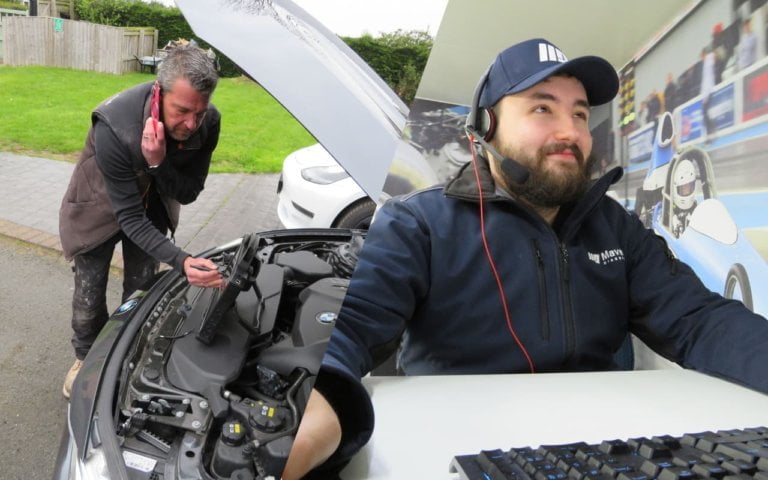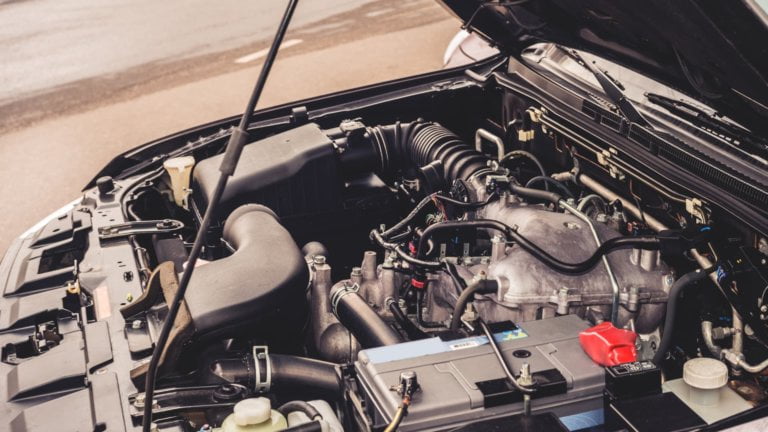Should I buy an EV, Hybrid, Petrol or Diesel Car?
Things to consider
This topic is fast becoming the most confusing factor for a car buyer. Second-hand and new EVs and hybrids are entering the market every week.
Everyone seems to have an opinion about it.
- There are friends who say, ‘my family and I need to do our bit to save the planet. What do you recommend?’.
- People like my builder friend who says, ‘my van cost me two grand, there’s no way I’ll ever be replacing it with a 20 grand EV van that won’t have the same range or carrying capacity.”
- The absolute haters who won’t even speak to me about EVs or hybrids.
- And I’m sure you’ve met what we call the EV ‘fanatical’ owner. They are usually the early adopter-techie-type, who bought a Tesla, Nissan Leaf or Toyota Prius (or ‘pious’ as Jeremy Clarkson and I call them). They are wholly converted to the EV and feel self-assured that saving the planet and saving money is for them. Of late, this has become a little bit more difficult to justify as the price of electricity per kilowatt hour has rocketed up.
- Then there are people like me. I have been stuck on the fence for a long time, bearing in mind that I am a massive Petrol-Head and undertake to burn gallons of race fuel on the dragstrip at any opportunity.
Whatever the type, once someone does switch to an EV and they’ve had a good run at it, have decent charging facilities nearby, or free charging at work/with Tesla, they become entirely sold on the fact that they never need to go back to a petrol station, other than to buy a pint of milk or a Gregg’s sausage roll.
The Difference between EV and Hybrid Types
So, let’s start to break down the different types of electric and hybrid vehicles available, both new and second-hand. I’m going to start by explaining the differences between;
- plug-in Hybrid, aka PHEVs,
- hybrid, also known as a self-charging hybrid,
- mild hybrid MHEV,
- early battery electric vehicles, i.e. Early BEVs and
- new BEVs
The PHEVs (Plug-in Hybrid Vehicles)
A plug-in hybrid electric vehicle, or PHEV as it’s commonly known, is probably the best solution for the person who sticks within their city limits; you will suffer no range anxiety, i.e., the batteries are not going to run out because you’ve already got an engine attached to it and also, if you have the luxury of a drive and a charger at home, you can charge this vehicle, and it will probably run 15 to 30 miles )depending on the make and model) pretty much on full EV.
However, when it comes to the winter, all battery electric vehicles, whether hybrid or full electric, have a weakness. As soon you hit the heater or the heated seats button, your range drops dramatically. Mrs B and I have been running a 2015 Mitsubishi PHEV for many years, and I find it fantastic for local journeys, i.e. dog walking in the morning, nipping to the supermarket etc.
The worst economy locally is 70 MPG. It’s a different ball game when I want to nip up to Manchester. The PHEV quickly uses all of its battery life and becomes a relatively low-powered petrol car that hauls around some pretty heavy batteries and only delivers around 35 MPG. 35 MPG is not horrific, and I do occasionally take this car down to London with the smug satisfaction that I can get into the low emissions zone without paying.
Self-Charging Hybrids
Self-charging hybrids used to be known as a ‘hybrid’ (they just seem to have rebranded it recently) is a different thing altogether to a PHEV. Guess what? It doesn’t need to be plugged in and generally contains a very small battery.
I admit I’ve owned a Toyota ‘Pious’. It’s actually a pretty fantastic bit of technology; it uses the petrol engine for the majority of the time, and it cruises and pulls away from a junction with the electric power it charged when braking or slowing down (which is pretty much what all EVs and hybrid do).
The range of a hybrid car running on full electric is only around 1 mile and why I recommend a full PHEV for local runs on full electric.
Overall, the hybrid system gives you a balance of economy that you can never achieve in a normal petrol car. Instead of delivering 30 MPG, a Prius will deliver 45 to 50 MPG on every occasion; on the motorway, knocking around town etc.
So, I would recommend these to most people as they make a good compromise. And the bonus of the Prius is they are usually big enough to accommodate an entire family with baggage.
The other main attraction of the Prius is, after meeting taxi drivers around the world from LA to London, it is always declared to be totally reliable; I met a gentleman who was showing me the mileometer on his Prius, and he had just completed 330,000 miles with only a couple of new battery cells and a minor engine issue in its lifetime.
The MHEVs (Mild Hybrid Electric Vehicles)
Mild hybrid or MHEV is what it says it is; unlike a hybrid or self-charging hybrid, it is based on a 48V rather than a 200V (or higher) system.
VAG group cars have a motor built into the flywheel. Other systems use a type of alternator/starter unit alongside a conventional starter motor which assists a conventional petrol engine for better economy.
As with the self-charging hybrid, it also regenerates and charges its own battery when the vehicle is slowing down or braking. It can also assist engine cruising like a KERS system on a Formula One car. This saves fuel overall; I’ve never been sure exactly how much, but it is far cheaper to produce this system than any other.
In reality, these cars will not be around after 2030 as their main benefit is tax reduction rather than emissions reduction.
Early BEVs (Early Battery Electric Vehicles)
Read this if you are tempted to buy a cheap old/early Battery Electric Vehicle.
I’ve also run an early Nissan Leaf, and I enjoyed this car very much. It was nippy and a great talking point – “what’s it like?”, “can I have a go?”.
The leaf is very ugly but very functional, and it had a realistic range of about 70-odd miles on a good day in fair weather. I should also point out that it was a very early 2011 24KWH model and car of the year 2011, apparently (I know this as it’s got a sticker on the back).
Again, like the Mitsibushi, this car was utterly useless for longer journeys. Users immediately suffer from ‘range anxiety’ and even ‘range-apoplexy’.
Eventually, the battery on my Nissan leaf gave up, which was very common in these early vehicles. Many Leaf owners went on to purchase modified larger battery packs, but this has become very expensive (anything up to £14K) and outweighs the cost of the vehicle.
I’ve got to say early EV cars are often not worth the money, but as a learning experience, it’s been great. The Nissan Leaf was ‘my first EV, and I learnt my craft in repairing EV vehicles from this car.
In fact, my Nissan Leaf is still in our training centre today, being dissected by students on a regular basis (poor thing).
New BEVs
Moving on to modern fully electric vehicles, like from Tesla, BMW, Toyota, Skoda, Audi, VW, Polestar, Kia, and MG. I have been lucky enough to either drive, borrow or own one of these.
In my experience, all of these cars have been brilliant. If you’ve not driven an EV, I thoroughly recommend it. They are totally different to drive; totally smooth and actually a bit of a revelation for an old petrol-head like me. It’s just a different experience altogether you end up not looking at how fast you can go but how much battery you can save; driving does become a pleasure if you adjust your attitude to it.
I think Teslas are the easiest to live with simply because a Tesla driver has access to lots of charging infrastructure, and if you buy the right model, you get free supercharging.
However, here’s the rub, it seems half the EV population now owns one, which means my Tesla-owning friends tell me there is usually a big queue when they go to supercharge their cars. This has led to a recent backlash and frustration with Tesla.

The reality of living with EVs
For a non-Tesla owner, the biggest hurdle is the number of different charging points available and the recent cost hike.
For example, I recently drove down to a meeting in Cardiff. I had the option of driving a Polestar 2 or a hybrid BMW i8.
For the Polestar, I looked at the hotel I was staying in, which had a BP pulse charging station at 75p per kilowatt hour and estimated that I would have to put in at least 75 kilowatts costing £56.
Ultimately, it was far cheaper for me to drive down in the hybrid i8, which cost me £30 in petrol.
Technological advances
The difference between early and later BEVs is huge; the battery technology and chemistries are very different.
The old Nissan Leaf above had air-cooled nickel metal hydride (NMH) batteries with no heating or cooling – basically, the batteries are in a tin box.
The modern EV often has an optional heat pump to warm the batteries in the winter and air conditioning or liquid cooling to cool the batteries in the summer. Its chemistry, being lithium polymer, is totally different.
This type of battery extends the range massively and has evolved from mobile phone technology. As technology moves on, batteries have become far more efficient, and battery life has been drastically extended. Tesla claims they will have the first million-mile battery soon, and Mercedes are making similar claims with their EQS model.
Battery Diagnostics
Battery testing products, like Aviloo, are coming into the UK market, and I’m sure soon-to-be second-hand electric vehicles will be valued on the remaining capacity of the batteries.
My advice on buying a second-hand rather than a new EV is to make sure that it comes with a battery test report (like those available from Aviloo) before you purchase.
I have been speaking to battery refurbishment companies, and the prices are simply eye-watering.
So, what’s the future of petrol and diesel vehicles?
I chatted with some lovely people from Greenpeace a couple of years ago, and they were extolling the virtues of electric power and green power, which is very admirable.
They were also talking to me about hydrogen-powered vehicles, and I explained the difference between blue and green hydrogen (another subject with a blog to come very soon).
I explained that the real problem with BEVs is that the carbon offset for the vehicle build would involve driving them for up to 600,000 miles. This is due to the lithium and other precious materials having to be shipped worldwide to mega battery factories and then shipped back across the globe to car manufacturers.
The carbon offset on a hybrid vehicle is far less as the materials required are more readily sourced. The battery pack is relatively small – for example, a 1.3-kWh battery versus a 100-kWh battery (in a full EV vehicle). The carbon recovery on this is slightly higher than for a petrol or diesel vehicle at around a hundred thousand miles. The other advantage of hybrids is that they are relatively easy to fix because workshops are beginning to understand the technology – an engine with a CVT automatic transmission and an electric motor in the front, middle or back. Effectively, the engine serves as a generator with a battery pack.
Going back to Greenpeace, I told them that the most economical and planet-friendly car is a 10-year-old Nissan Micra. I wasn’t being facetious. Building new cars creates a lot of carbon; let’s face it, something like an old Micra is still reliable and economical.
When asked what new car they should buy, I said, ‘as small as possible’.
Dirty Diesel and a brief look at Hydrogen
Manufacturers have tried to forget about diesel engine cars since diesel-gate; diesel is now a dirty word.
I am an ex-Bosch guy, and I know that Bosch, who incidentally invented most modern diesel technology, now seems to choose to ignore the fact that diesel ever existed.
They talk instead about gasoline direct injection (GDI). GDI has made vehicles far more efficient.
For example, a 1.0 Ford Fiesta now produces 170 BHP. I had a 1.1 Fiesta in 1987, producing 54 BHP when in tiptop condition. Obviously, this is all relative to new technology, and the emissions on these eco-tech engines are practically zero.
So, if you are looking at something small, efficient, and possibly planet-saving, a small petrol-engine car is still the answer.
I should talk more about large diesel-driven things at this point. In certain areas, diesel is still currently irreplaceable.
You can make diesel cleaner and more efficient by injecting gases such as methane and hydrogen into those engines, thus cleaning their emissions up. Current battery technology is insufficient to run an HGV – you would need a trailer full of batteries to run an HGV, and imagine the charging time.
Off-highway manufacturers, e.g. tractor and plant machinery manufacturers, such as JCB, have recently invested heavily in hydrogen power. New Holland (the blue tractors) already have a methane engine tractor on sale in the UK today – these vehicles will effectively run on processed cow poop via a bio-digester.
What to look for in an all-around family EV or hybrid
What car you choose obviously depends on whether you’re going to buy a new or a second-hand car and what price you’re prepared to pay.
For example, you have a family of five who want to be green that sees the overall benefit of owning an electric vehicle other than a Tesla.
My business partner recently converted to EV. He has a big family with 7+ grandkids and needed something with good range and the ability to carry a decent number of people, footballs and dogs etc. After some research, he decided to go for the Skoda 90 kWh Enyaq. It’s roomy and has a ‘real-life’ range of 260 to 270 miles (which increases further when you use regenerative braking).
Obviously, like any vehicle, its economy depends on how much load you carry and, as I said before, the temperature conditions. I have found that most of these later EVs are good, but costs can be prohibitive. Plus, post covid, a worldwide chip shortage has caused massive delays in vehicle manufacture; I was told that the average wait for an Audi Etron is still up to 18 months.
My business partner is delighted with his Enyaq – with only minor electronic glitches to report, it has proved economical and, because of chip shortages, the car is currently worth as much as he paid for it. This will not last forever. With manufacturers like Shanghai Motor Company (MG and LDV brand) and other Chinese manufacturers like Ora Funky Cat (believe it or not) bringing more and more EV cars into the UK market, the price of EVs is going to come down.
However, there is a small problem with this; in the UK, we don’t have enough trained EV technicians to service these vehicles. One of my Tesla friends recently had an experience where a local Halford simply would not MOT his Model X as they said they weren’t qualified and it was too heavy for their vehicle lift.
This issue brings us back to the conclusion that a hybrid may be a better overall option as it is far more conventional.
Advice on travelling long distances in Full EVs
When travelling out of the locality, you must consider good old-fashioned journey planning.
We are certainly not used to planning our journeys these days – we just hop in a car, set the satnav and, at most, plan the odd stop for a toilet break and a sandwich.
All modern electric vehicles have a navigation system focused on showing the nearest charging points, and my advice would be – don’t rely on this. As per my real-world experiences, I would always recommend researching, especially if you are heading to a new destination.
Firstly, check online to ensure the charging points are still working or, in some cases, still there (as this has happened to me a couple of times).
Download the relevant apps servicing these charging points and register an account, as this can be time-consuming. Be aware that some charging points are simply not worth plugging into.
For example, if you’ve got a 100 kW battery plugged into an 11 kW per hour charger at motorway services, it will take approximately nine hours to charge – hence why Tesla has superchargers charging up to 250 kW per hour.
Obviously, a small kilowatt charger is perfectly fine when you’re staying at a hotel overnight. If you are driving a full BEV, you will need a 150-kW charger, at least, to get you anywhere efficiently and quickly on a long journey.
So, should you buy an EV or a hybrid as your next car?
The answer to this will depend on the UK government’s policy.
They have set a deadline for pure petrol and diesel vehicles to be replaced with Electric or Hybrid Vehicles by 2030.
In my honest opinion, the UK’s already overstretched infrastructure will not be ready. In part due to the average cost of a multiple high kilowatt charging station being over £500,000. Let’s use some simple maths to explain.
The average petrol station has approximately eight pumps, services 20 cars per hour and is open for eight hours a day – that’s 1280 cars refuelled daily. Imagine the size of the field needed to charge all those cars for 40 minutes to 1 hour each.
To combat this, some manufacturers are already working on hot swap batteries, i.e. a battery is swapped at a station for a fully charged one ( this is already happening in Shanghai with trials in Norway). But again, this is pie in the sky at the moment.
Others have been talking about installing inductive charging loops in the road – again, this is incredibly costly and could only really work in cities. Some UK cities are installing charging points in lampposts, which seems very good until you realise they can only provide very low kilowatt charging as the wiring infrastructure does not have the capacity for more.
Although all these things will make a difference in the long run, the most significant impact will come from whether the government decides to ramp up tax for older diesel and petrol vehicles. This decision will push the electric and hybrid vehicle market forward much faster.
What do I recommend buying?
The future is bright; the future is electric (but most probably a hybrid of some kind).


